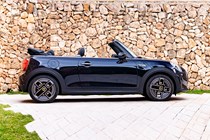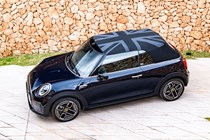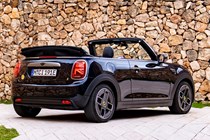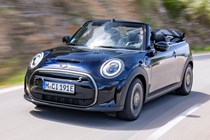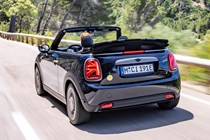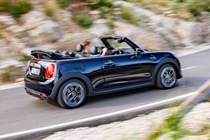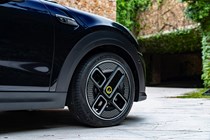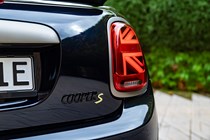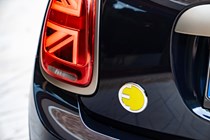MINI Electric Convertible Convertible (2023-2024) review
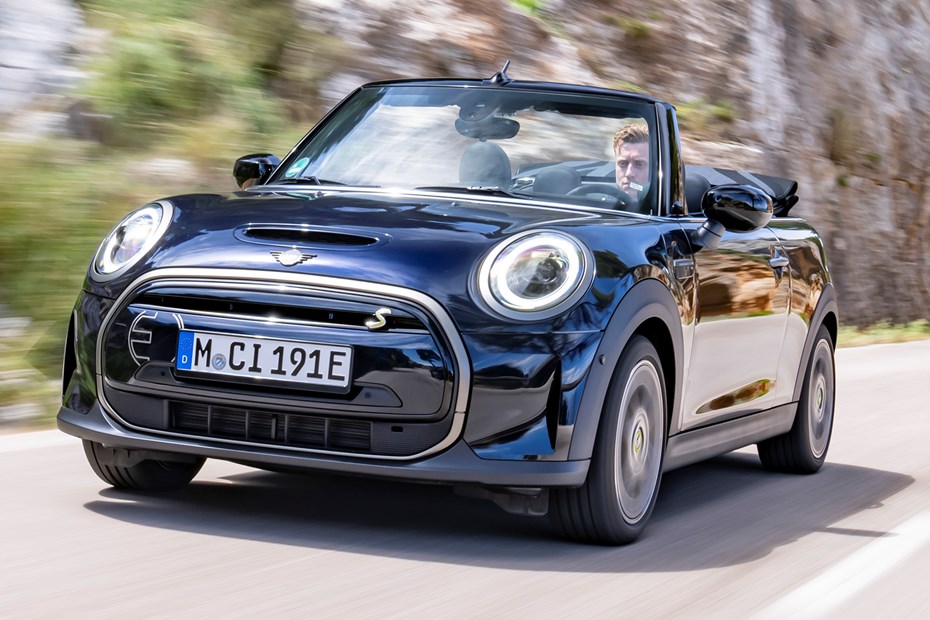
At a glance
| Price new | £52,500 |
|---|---|
| Used prices | £22,981 - £31,413 |
| Road tax cost | £620 |
Get an insurance quote with

|
|
| Fuel economy | 3.6 miles/kWh |
| Range | 124.9 miles |
| Miles per pound | 5.7 - 10.6 |
| Number of doors | 2 |
| View full specs for a specific version | |
Available fuel types
Fully electric
Pros & cons
- It’s an electric convertible!
- Serene driving experience
- Quick in a straight line
- Costs the same as a Porsche Boxster
- Maximum range of 124 miles
- Limited numbers
Overview
The MINI Electric Convertible is here by popular demand. Parent company BMW revealed a concept version of the car in summer 2022 and, after a raft of requests from interested punters begging for a production version, it buckled under the pressure and made it a reality.
But it won’t be around for long: MINI unveiled the production version of the Electric Convertible in February 2023 – but the MINI Electric Hatch on which it’s based is set to be replaced in 2024. So if you want one, don’t hang around. Production is limited to 999 examples, of which just 150 will make it to the UK.
The MINI Electric Convertible is without any direct rivals for now – aside from the much cheaper Fiat 500e, there are no other open-topped EVs on sale, which should put this car in a very good position. Although if you’ve already seen the on-the-road price in the data panel above, you’ll see that MINI is charging handsomely for the privilege.
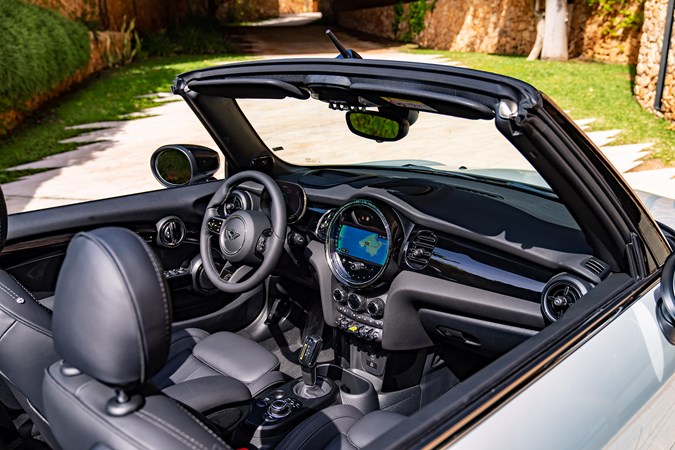
What it like inside?
Exactly the same as the range-topping MINI Electric Resolute Edition hatch, which is disappointing considering the premium you pay for the privilege of having it with a convertible roof. We’d have liked to see some model-specific upholstery, bespoke trim panels or clever technology, but the only benefit you get for the higher price is a bit more headroom (once you’ve folded the roof away).
Because the two cars are so similar inside, the convertible shares the same foibles as the hatch. We’ll start with the infotainment system, which is a particular point of contention in the standard car. The rectangular screen is set inside a circular binnacle and, to make it fit the space, MINI made it the same size and shape as a letterbox. Because the screen is small, the menu icons are tiny – and that makes them frustratingly difficult to hit on a bumpy road.
You can skirt around this issue by navigating the screen with the iDrive-style rotary controller on the centre console, which works well. However, that’s not enough to offset the other technology oversights. Android users will want to look elsewhere, for example, because the Electric Convertible is only compatible with Apple CarPlay.
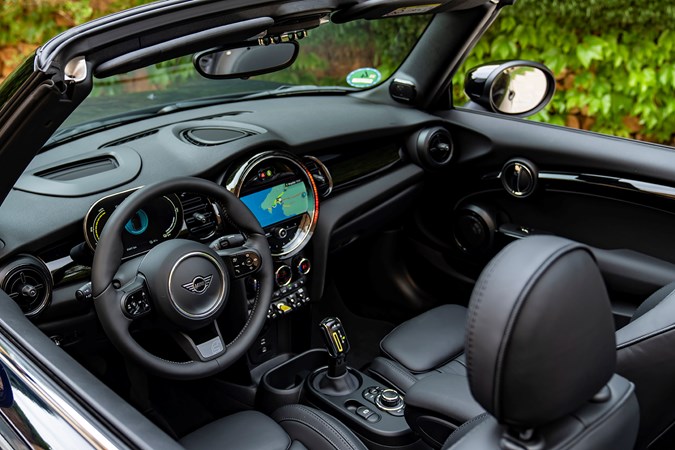
The digital gauge cluster doesn’t suit the car, either. Like the unit fitted to the hatch, it’s coated in frosted glass which becomes almost entirely opaque when struck with the faintest ray of sunlight. That’s less than helpful in a convertible. There isn’t much to configure on the screen, either, which is either a blessing or a curse depending on how much of a technophile you are.
Then there are the practicality sacrifices. MINI didn’t pick the ideal starting point because the Electric hatch is far from spacious – but it makes the convertible look like the Tardis by comparison. Even the wiriest, most malnourished marathon runner couldn’t squeeze into the space between the rear bench and the front seat back. With the seat set for a six-footer, you can’t even get a hand into the gap between the seats.
It gets worse when you fold the roof down, too. If you don’t want to arrive at your destination looking like a reject from an 1980s hair metal band, you need to fix a wind break over the bench which renders it utterly useless for carrying passengers. At least the boot is identical to the standard MINI Convertible at 160 litres.
Visibility is also very poor. With the roof erected, the only gateway to the world behind you is a tiny porthole-sized screen that offers a frustratingly narrow field of vision. It gets worse when you retract the roof, too, because it folds into a thick bundle of fabric perched high on rear end which blocks your vision entirely.
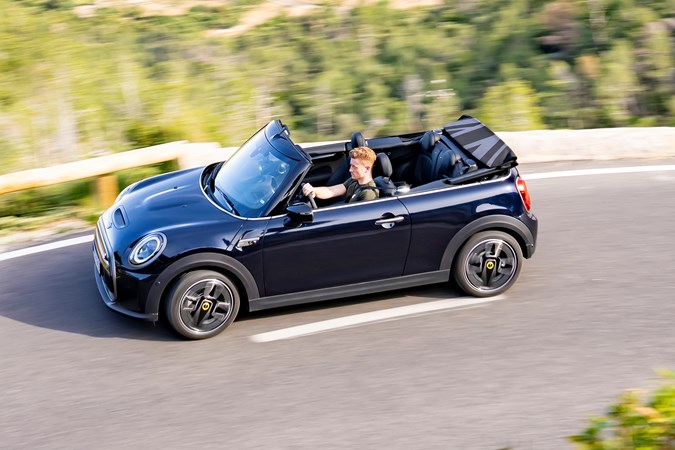
What’s it like to drive?
The convertible is powered by the same motor as the MINI Electric hatch which produces 184hp and 270Nm of torque. That means it’s surprisingly quick in a straight line. Unlike some EVs, performance doesn’t peter off as the needle climbs around the speedometer. The powertrain pulls strongly from a crawl right up to the national speed limit (and beyond).
It’s rather entertaining when you floor the throttle, too. The steering wheel squirms around in your hands as the front wheels scrabble for grip, which makes it feel a lot like a petrol-powered Cooper S. The instant torque from the motor means you can slingshot out of corners much faster than your can in the petrol convertible, too.
However, the Electric Convertible is 105kg heavier than the standard MINI Electric because of all the extra bracing required to stop it from folding in half when you hit a pothole. That means it’s almost a second slower from 0–62mph than the hatch – and it’s considerably less impressive in the corners.

It’s softer than the hatch, too, thanks in part to the extra flex in the body. No amount of bracing can compensate for hacking the roof off a car and, because the MINI Electric was an afterthought project cobbled together on a combustion car chassis instead of a dedicated skateboard-style EV platform, it doesn’t gain any extra torsional rigidity from the battery pack.
The convertible’s softer edge will make it much better suited to a life of posing around the trendy parts of London but there’s little here to excite keen drivers, no matter how much MINI’s ‘go-kart feel’ advertising campaign argues to the contrary.
Like the MINI Electric Hatch, the convertible’s steering is heavy and direct but utterly lifeless which, when paired with the sterility of the electric motor, makes for a rather clinical driving experience. There’s also a fair amount of scuttle shake at speed, which is inexcusable in a car costing more than £50,000.
Then there’s the range. The MINI Electric hatch has a maximum WLTP range of 145 miles, but we found that to be closer to 100 miles in the summer and 80 miles in the winter. The Convertible loses 21 miles of its official range to the added weight and wind resistance of its drop-top roof, which pretty much confines it to the city. I don’t know about you but sitting in heavy traffic in a drop-top MINI inhaling diesel fumes from buses and Transit vans doesn’t appeal.
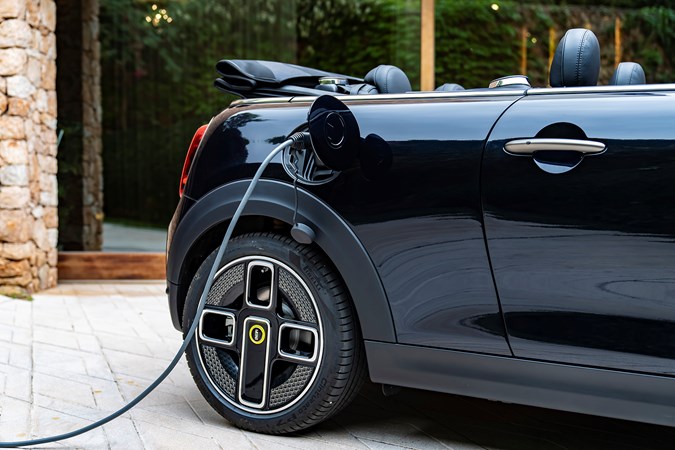
What models and trims are available?
You can only have it in MINI’s range-topping Resolute Edition trim, which comes with all the bells and whistles available on a current-generation MINI. The brand’s paint shop even mixed up a couple of fancy colours for the project, such as Enigmatic Black which looks black in the shade but a mixture of blue and purple in the sun. It’s very nice.
MINI crowned its efforts by jacking the car’s price up to an almost comical level. Each one costs the same as an entry-level Porsche 718 Boxster, which is an awful lot of money for what’s essentially an end-of-life car built from recycled components.
But do we recommend the MINI Electric Convertible? Does a near-complete lack of rivals justify the high price and limited availability? Read our review to find out…




